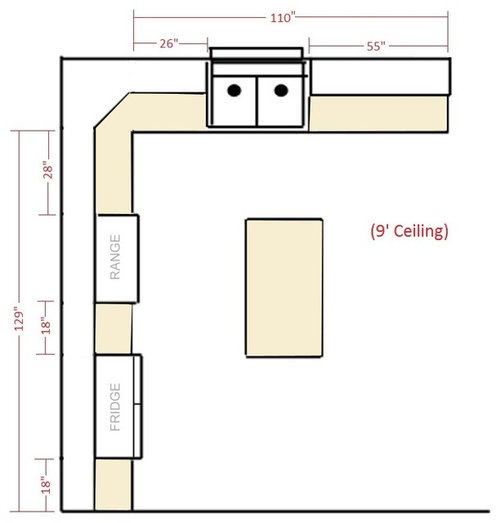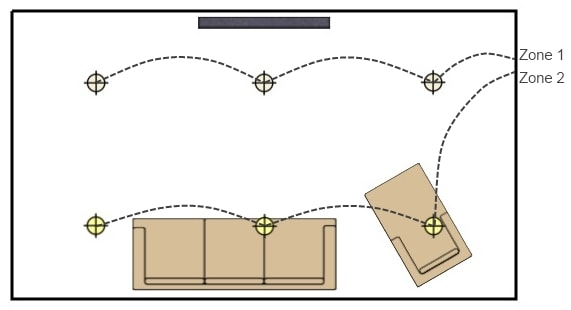
Recessed lights are great for functional, decorative, or ambient use or combined purposes in one space.Ĭhoose whether you want the lighting mostly for utility or decorative purposes. So, first, think about what you’re going to use the lights for. The layout of your recessed lighting should be based primarily on your purpose for the lights. Naturally, if you will also be using lamps and/or wall sconces, you may want fewer recessed lights.ĭecide What the Recessed Lights Will Be Used For
#6 recessed lighting layout install
The number of pot lights you install and the way you space and pattern your array of recessed lights should depend on a combination of considerations: Here are some great tips for creating your unique recessed lighting layout. Of course, as with any type of lighting, room designs and lighting layouts are the keys to making the most of the functional and aesthetic benefits of recessed lights. Recessed lights are ideal for focusing soft light on small areas or for lighting a whole room, and can be used for any design purpose - business utility, aesthetics, or ambiance. Many states, energy suppliers and nonprofit organizations offer rebate programs to help cover the cost of installing new LED lights.Recessed lighting is very popular with residential and commercial interior designers because it’s unique, beautiful, and exceptionally versatile. LED recessed lighting serves both an aesthetic and practical function and is definitely worth the time and effort it takes to install. Add the bulbs (if required, most LEDs have the light source built-in), and restore the power. Mount the light housings with clips, so they're flush with the ceiling.ĩ. Run electrical cables from a power source to the fixtures.Ĩ. Cut holes in the ceiling ready for the new fixtures.Ħ. Lay out the new light locations on the ceiling.ĥ. Remove old fixtures, leaving 12 to 18 inches of wire for the new lights.Ĥ.

Make a recessed lighting plan taking into account lighting requirements, space above the ceiling and any insulation present.ģ. It's possible to install recessed lights without an electrician. Find more LED recessed lighting ideas here. Can lights should be placed 2.5 to 3 feet from the wall to avoid casting a shadow.

Also, consider can light distance from the wall. Generally speaking, recessed lights should be spaced 3 to 4 feet apart for low-to-medium ambient lighting and 2 to 3 feet apart for areas where high ambient light is required, such as in bathrooms and kitchens. For example, some trims reduce glare or are suitable for use in wet areas, such as showers.Īn important consideration in recessed lighting design is spacing. As well as aesthetic considerations, trims should be chosen for functionality. The trim is the visible part of the light fixture. The size of the fixture affects ceiling recessed lighting placement the higher the light is installed, the more the light is diffused, so a larger size is required to provide direct light. The most popular size for can lights is 6 inches, but they're also widely available in sizes between 4 and 8 inches. So replacing your old incandescent or halogen recessed fixtures with LEDs will save you both time and money.įactors To Consider When Choosing Recessed LightsĬonsider several factors when planning an LED recessed lighting design. LEDs produce very little heat, are energy-efficient and last much longer than traditional bulbs - anywhere between 20,000 and 50,000 hours.

A popular choice for a bedroom recessed lighting layout is to install a row of lights above the bed to create additional ambient light. Living room recessed lighting is useful for spotlighting artwork or architectural features, while recessed kitchen lighting adds direct light to areas such as countertops. For this reason, recessed lights are ideal for small rooms or spaces with low ceilings. Unlike traditional ceiling lights that hang down from the ceiling, recessed lights - also known as can lights or pot lights - are set into the ceiling, leaving none of the housing visible. What Are the Uses and Benefits of LED Recessed Lighting? Choose from a range of quality LED recessed fixtures from Lumegen. Illuminate smaller spaces with energy-efficient LED recessed lighting.


 0 kommentar(er)
0 kommentar(er)
